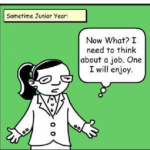I remember watching baseball games in the 1980’s. I couldn’t tell if the Giants were playing in Pittsburgh, Cincinatti or Philadelphia. Every stadium was the same – a giant, donut-shaped behemoth meant for concerts, baseball games and football games. It was a one-size-fits-all mindset that ignored the nuances of the game.
Perhaps the worst of these stadiums was the Astrodome. Built in the sixties as a futuristic prototype of stadiums, it featured the world’s largest Jumbotron in the outfield and the trendiest yellow, orange and blue colors throughout. It was built with the sole focus of being innovative in an era of the Space Race.
However, when the light blinded players, they painted the tiles and brought in Astroturf. This caused the grass to die, so they created Astroturf, an injury-inducing artificial surface. The fans had horrible sightlines. The stadium grew into a modernistic relic, because unlike truly modern architecture (say a Frank Lloyd Wright structure) the only guiding idea behind the stadium was innovation. The colors became laughable. The Jumbotron looked like an Atari system. I suppose it would now be cool in that hipster, ironic way. But in every other respect, the stadium became a joke.
So, it has me thinking about our donut-shaped behemoth schools systems. Some say we should crush them and build new places with iPads and Chromebooks and STEM centers. Think outside the box. Go futuristic. Be innovative.
I wonder, though, if we are simply setting ourselves up for a new Astrodome. See, I don't want to think outside the box. I don't want to demolish school altogether and start out with something new. I want to repurpose the box. I want to redesign schools so that they fit the purpose of learning. I fear that in a world where we are rushing to abandon the factory, we are simply demolishing it and replacing it with a new factory. Call it an iFactory if you'd like.
My favorite ballparks are the ones designed with the baseball experience in mind. AT&T Park in San Francisco and Camden Yards in Baltimore come to mind. They are both high-tech without featuring tech as the driving force. There is an aesthetic and a purpose to the places that respects both the current context and the vintage past.
- My dream for education is a little more like AT&T Park in San Francisco. Here’s what I mean:
Respect the vintage while also thinking about the future: We need to recover nuance, paradox and a reconnection to the land. Some of the best ideas are vintage. Reformers need to be mindful that relevance is not the same as novelty. - Open up the spaces: I’m struck by how open the best ball parks tend to be. Fenway and Wrigley fit this concept well. Why not open up the schools a little more? Create gardens. Allow for windows that open. Don’t tear down all walls, but maybe create some half-walls.
- Reconnect with the community: The newer ballparks open up to the community. They don’t feel as gated and guarded. You can see the beach or the skyline of the local community. They recover what Wrigley and Fenway have in common, in that sense of being nestled into the "neighborhood." What if schools were more open? What if they fit the identity of the community? What if we had more mentors, guest speakers and community experts?
- Be intentional: My favorite stadiums are built, not as stadiums, but as ballparks. They are designed for the game. We need to rethink the purpose of education and design schools that fit the purpose of learning. I would love to see more integration between subjects, more projects, more problem-solving and more critical thinking. I’d like to see fewer tests, packets and homework.
- Embrace creativity: The best ballparks have creative dimensions. Whether it’s the Green Monster or the ivy-covered fences or the home run porch, there is something creative to the place that fits the identity. I would love to see schools thinking creatively about space, curriculum and instruction.
If we push for innovation alone, we end up with an embracing of a ever-fleeting novelty. We chase new ideas without asking the hard questions regarding sustainability (last year it was flipped and this year it's MOOCs). We ignore relevant voices of the past, the context of the present and the deeper purpose of learning in a reckless race to the be the trailblazers.
I'd rather build a place that's meant for the community, that's built for the players and that makes the game enjoyable to be around again.








